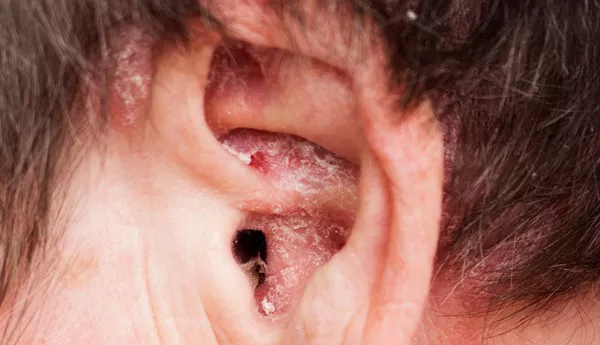Seborrheic dermatitis is a common skin condition characterized by redness, itchiness, and flaky skin, particularly in areas rich in oil glands like the scalp, face, and upper chest. While its exact cause isn’t fully understood, various factors including genetics, hormones, and certain environmental triggers can contribute to its development. In recent years, researchers have also explored the potential impact of diet on seborrheic dermatitis. Understanding which foods may exacerbate or alleviate symptoms is a critical aspect of managing this condition effectively.
What is Seborrheic Dermatitis?
Before delving into the relationship between diet and seborrheic dermatitis, it’s important to grasp the basics of this skin disorder. Seborrheic dermatitis involves an inflammatory response primarily linked to an overgrowth of a yeast called Malassezia on the skin’s surface. This yeast is naturally present on human skin but can proliferate under certain conditions, leading to irritation and flaking.
The areas most commonly affected by seborrheic dermatitis include the scalp, eyebrows, sides of the nose, and the area behind the ears. The symptoms can range from mild dandruff-like flakes to more severe redness and greasy scales. Factors such as stress, climate, and underlying medical conditions can exacerbate these symptoms.
The Role of Diet
While diet alone isn’t considered a primary cause of seborrheic dermatitis, emerging research suggests that certain dietary choices may influence its severity or recurrence. The relationship between diet and skin health is complex and can vary from person to person. Here’s a breakdown of key dietary factors that could potentially impact seborrheic dermatitis:
1. Foods High in Sugar
Consuming excessive amounts of sugary foods and beverages can potentially worsen seborrheic dermatitis. High sugar intake is associated with inflammation in the body, which may exacerbate inflammatory skin conditions like seborrheic dermatitis. Foods to limit include sugary snacks, desserts, sodas, and sweetened beverages.
2. Dairy Products
Some individuals with seborrheic dermatitis report improvements in their symptoms after reducing dairy consumption. While the link isn’t fully established, dairy products like milk and cheese may trigger inflammation in certain individuals, potentially contributing to skin issues. Experimenting with dairy-free alternatives could be worthwhile for those seeking dietary interventions.
3. Gluten
Gluten is a protein found in wheat and related grains. Some anecdotal evidence suggests that gluten sensitivity or intolerance could play a role in exacerbating seborrheic dermatitis symptoms in susceptible individuals. Exploring a gluten-free diet under medical supervision might be beneficial for those with suspected sensitivities.
4. Omega-3 Fatty Acids
Incorporating foods rich in omega-3 fatty acids, such as fatty fish (salmon, mackerel), flaxseeds, and walnuts, may have a positive impact on inflammatory skin conditions. Omega-3 fatty acids possess anti-inflammatory properties that could potentially help manage seborrheic dermatitis symptoms.
5. Probiotics
Probiotics are beneficial bacteria that support gut health. Emerging research suggests a potential link between gut health and skin conditions. Consuming probiotic-rich foods like yogurt, kefir, sauerkraut, and kimchi may help balance the gut microbiome, possibly improving overall skin health.
6. Alcohol and Spicy Foods
For some individuals, alcohol consumption and spicy foods can trigger flare-ups of seborrheic dermatitis. Alcohol can dilate blood vessels and exacerbate redness and inflammation, while spicy foods may lead to increased sweating, potentially aggravating symptoms.
Individual Variability
It’s important to recognize that dietary triggers for seborrheic dermatitis can vary widely among individuals. What exacerbates symptoms in one person may not affect another. Keeping a food diary to track symptom changes in relation to dietary choices can be helpful in identifying personal triggers.
Conclusion
In conclusion, while diet alone isn’t likely to cause seborrheic dermatitis, certain foods and dietary patterns may influence its severity and recurrence. Experimenting with dietary modifications, under the guidance of a healthcare professional, can be a valuable adjunct to conventional treatments. A balanced diet rich in whole foods, lean proteins, and healthy fats, while minimizing potential triggers like sugar and dairy, may help manage seborrheic dermatitis effectively. As with any medical condition, individual responses to dietary changes can vary, so it’s essential to work closely with healthcare providers to develop personalized strategies for optimal skin health and overall well-being.
Related Topics:
- What Is Acute Eczema
- What Is Facial Seborrheic Dermatitis
- Understanding Follicular Eczema: Causes, Symptoms, and Treatment


























